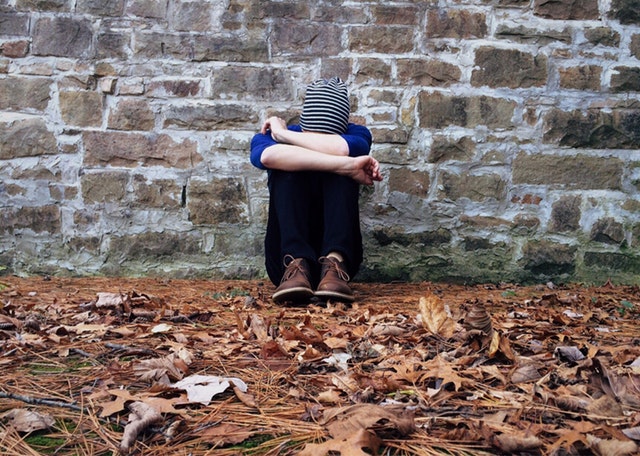
This time of year can be very difficult. Little to no sunshine, being cooped indoors, short days, and long nights. It’s not unusual for clients to come into the office, and complain of feeling some depression symptoms. Recently I have been talking to many clients about the differences between depression and Seasonal Affective Disorder (SAD). SAD is a form of depression, but is often misunderstood. So what does SAD look and feel like?
Symptoms
Depression and Seasonal Affective Disorder have similar symptoms. Some of these may include down or depressed mood, loss of pleasure in activities, self-isolation, loneliness, canceling social plans, lack of focus, no motivation, low energy, sleeping more or less, change in appetite, an increase in irritability, and thoughts of hopelessness.
Both depression and SAD can make you crave carbohydrates, gain or lose weight, and also feel sluggish. In addition, you may struggle with suicidal thoughts or overall thoughts of despair. It can also be described as an overall “heaviness”, and just not caring about anything anymore. I once heard a client describe it like moving through molasses—it takes so much energy to do everything and it feels like you’re moving in slow-motion.
SAD and depression can also cause physical symptoms. If you have unexplained headaches, cramping, digestive issues, or aches and pains, it may be due to depression. Please note: If you are having unexplained pain please seek a medical professional’s opinion before self-diagnosing yourself.
SAD is more likely to occur in women than men. In fact, the National Institute of Mental Health (NIMH) says that women are 4 times more likely to struggle with SAD than men. You are also at a higher risk if you live further from the equator. People who live in sunny states, like southern California or Florida, are less likely to struggle with SAD, compared to those living in northern states. Also, if you already struggle with depression or another mental illness, or you have a family history of mental illness, you are also at a higher likelihood to develop SAD.
Differences
SAD is a form of depression that is seasonal. It usually starts around late fall to early winter, when the days get shorter and are more gray. While you may fit the criteria of clinical depression during the winter months, SAD will eventually dissipate once the seasons change. An increase in sunshine, Vitamin D, and getting outdoors lifts the fog and you start feeling better.
If it is clinical depression, it will not get better as the seasons change. You may still feel exhausted, irritable, “down”, and hopeless even with the warmer weather. At this point, it is no longer considered SAD, but actual depression.
It’s not unusual for SAD to reoccur every winter or every few winters for those that are prone to it. Some winters may be harder than others, with no rhyme or reason. SAD is often referred to as the “winter blues”, but this is misleading. SAD can be so much heavier than just the “blues”, and can really impact your day-to-day functioning. Again, if it continues through the spring and summer, it is depression, and not just SAD.
Treatment
There are many treatments for SAD and depression. One of my favorite things that I personally recommend is light therapy. Sunlamps are usually pretty inexpensive but can help mimic the sun without the harmful UV rays. They help your brain regulate the over-production of melatonin (which can lead to SAD), which in turn helps to regulate serotonin in your brain. Here is a link to an inexpensive sunlamp that I have in my office.
Another important treatment of both SAD and depression is to get your Vitamin D levels checked by your family doctor. Low levels of Vitamin D due to lack of absorption or lack of sun can cause depression-like symptoms to occur. If you are struggling with fatigue, no energy, and feeling “down” please get these levels checked. It is diagnosable by a simple blood test.
Therapy is another treatment for SAD and depression. If you are struggling this winter, please reach out for help. Therapy can help you gain coping mechanisms and ways to re-frame your way of thinking. Therapy can also help you uncover environmental or situational factors that could also be contributing to your SAD or depression. Work stress, family issues, marital problems, etc. can all make you feel more depressed.
Self-care is a very important piece of battling SAD or depression. Make sure that you are eating well, exercising regularly, and taking care of YOU. Self-care can be as simple as making lists, cooking dinner, getting a massage, or taking a class. Exercise, hobbies, art, and music are all very positive ways to increase your own self-care. If you struggle to take care of yourself, you might consider speaking to a professional for more help with this.
Finally, there are medications that can help with SAD and depression. I always encourage my clients to try all other methods before jumping to medications. However, sometimes therapy alone is not enough to change the chemical imbalance in your brain. Medication for SAD and depression is nothing to be ashamed of, and in fact, it can literally save lives.
Final Thoughts
If you are suffering from Seasonal Affective Disorder and/or depression, please reach out for help! You don’t have to do this alone. There are many treatment options available.
If you are struggling with suicidal thoughts, please call the Suicide Hotline at 1-800-273-TALK. If you are local in the Indianapolis area, you can also reach out to St. Vincent Stress Center at 1-800-872-2210 or Community North’s Behavioral Pavilion at (317) 621-5700 for help.
Written by Christy Fogg, MSW, LCSW
*Christy Fogg, MSW, LCSW is a licensed therapist at Journey to Joy Counseling. Christy enjoys doing marriage/couples counseling, individual counseling, premarital counseling. She also provides family counseling, teen and adolescent counseling.
Journey to Joy Counseling serves the Indianapolis area, including Carmel, Fishers, Noblesville, Zionsville, and Westfield.



